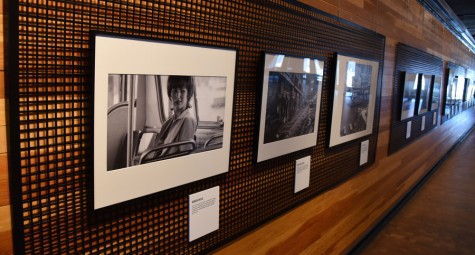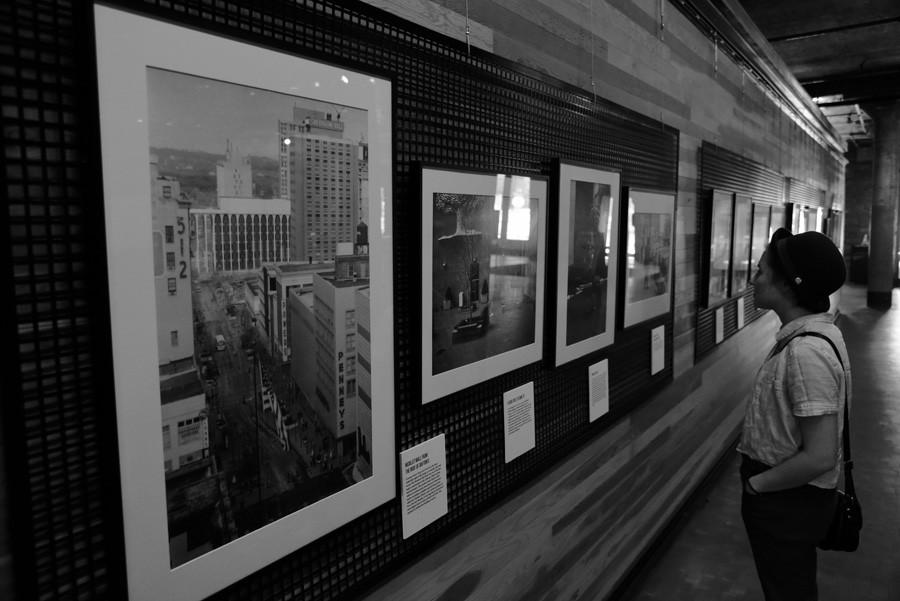Downtown: Minneapolis in the 1970s
The Minnesota Historical Society invites you to come see Minneapolis through a new lens.
Natalie Iverson (’17), a Hamline student, takes in the photographs of downtown Minneapolis in the 1970s taken by Mike Evangelist at Mill City Museum.
March 16, 2016
Days go by and we often don’t notice the change around us. Before we know it, the leaves have changed colors, winter has come and gone and construction has altered the skyline of Minneapolis forever. The Minnesota Historical Society invites us to take a step back and look at Minneapolis from the 1970s.
The exhibit “Downtown: Minneapolis in the 1970s” opened at the Mill City Museum in Minneapolis on Nov. 15, 2015. The exhibit is free to the public and explores what Minneapolis was like more than 35 years ago through photography.
“Downtown: Minneapolis in the 1970s” is a series of 22 photographs taken by Mike Evangelist from when he was a teen living in Minneapolis. Evangelist wanted to capture the growing and changing city by capturing images of people, buildings and vehicles.
Evangelist’s photos bring you back in time to see Minneapolis in a new light: The fashions of the ‘70s, the struggle of those facing hard times and the general day-today commute to work that’s still common today.
Visitors can also see some familiar sights in Evangelist’s pieces. “Building the Fed” captures the construction of the Federal Reserve Building in 1973. The piece showcases the famous arch that would eventually hold up the glass walls.
One of Evangelist’s other pieces, “Hitchhiking on Hennepin,” is of two young women attempting to find a ride to hitchhike. In the background, visitors can clearly see the sign for the infamous nightclub, Augies, which still stands today.
In addition to the 22 prints hanging in the Mill City Museum’s lobby, a screen also scrolls through many unpublished photos from Evangelist’s teen years in Minneapolis. The “Downtown: Minneapolis in the 1970s” exhibit serves as a companion to the book of the same name with text by author Andy Sturdevant. Evangelist and Sturdevant will be at the Mill City Museum on April 2 to sign copies of their book.

The Mill City Museum is open 10 a.m. to 5 p.m. Tuesday through Saturday and from 12 p.m. to 5 p.m. on Sundays.
If you are looking for more adventures while looking at photos of the past, check out the Mill City Museum while you’re there. Your Hamline ID will save you a few dollars and you’ll be able to learn about one of Minneapolis’s most iconic landmarks. You’ll get to see items from that time period in the museum as well as take an elevator tour inside the mill itself. There you can learn about life in the mill, what caused its destruction and why the Minnesota Historical Society chose to save the ruins.
After the elevator tour, you can walk around above the ruins, looking through the glass at what is left of the once gigantic flour mill. You can even step outside onto the balcony (weather permitting) and take in the gorgeous view overlooking the Mississippi River.
“Downtown: Minneapolis in the 1970s” will be on display until April 3. The museum is open Tuesdays through Saturdays, 10 a.m. to 5 p.m. and Sundays from 12 p.m. to 5 p.m. More information on “Downtown: Minneapolis in the 1970s”, the Mill City Museum and the Minnesota Historical Society can be found at www.millcitymuseum.org.

